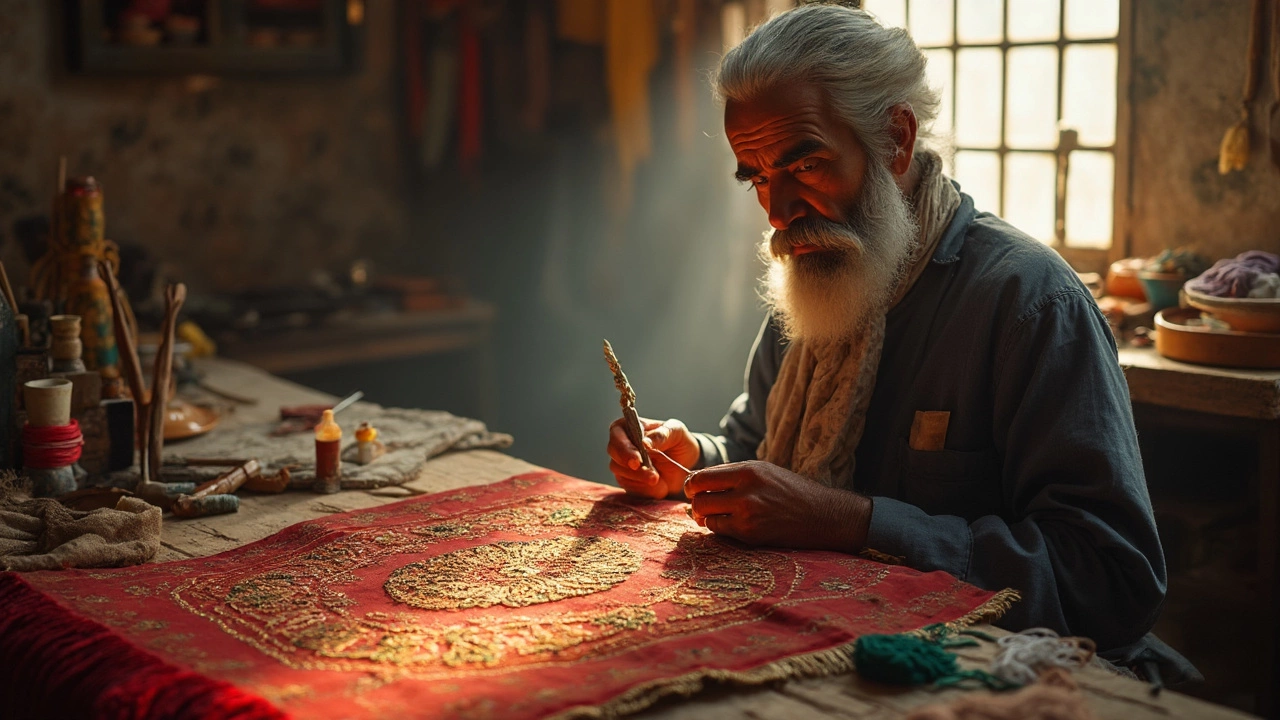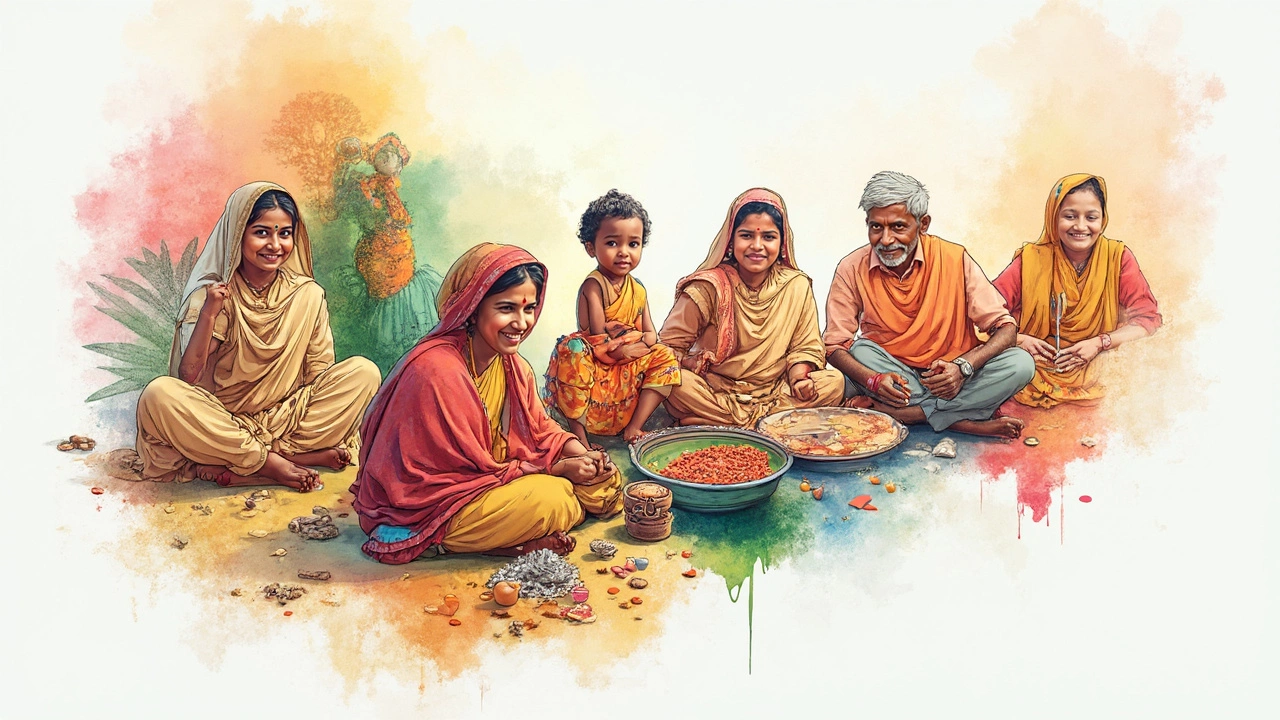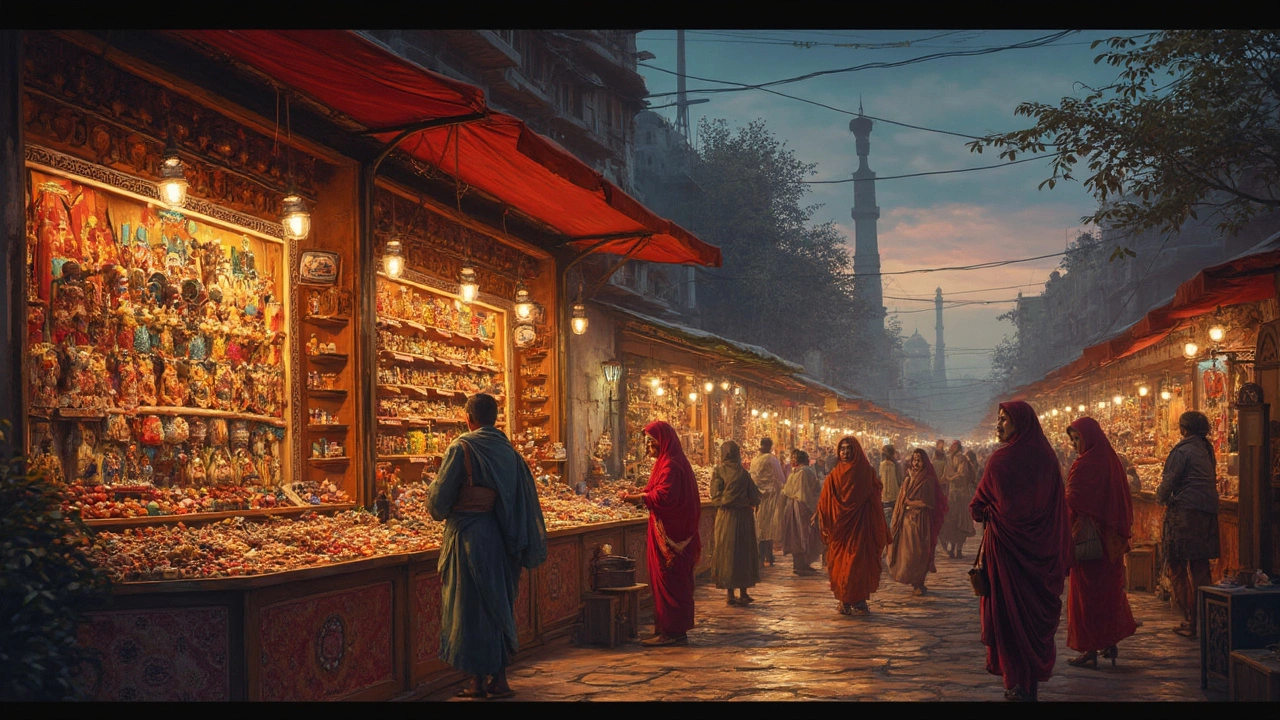Ask anyone who’s traveled across India, and they’ll tell you the same thing: there’s no place like this when it comes to stunning handicrafts. From the north’s hand-woven shawls to the south’s intricate woodwork, every corner seems to have its own story stitched, carved, or painted into reality. But when it comes to worldwide reputation—Rajasthan steals the show. People from all over the planet show up just to get their hands on block-printed fabrics, blue pottery, or those quirky, colorful puppets that kids (like my son Vikram) can’t help but play with.
Still, India isn’t one-note. Sure, Rajasthan wears the crown, but states like Gujarat, Uttar Pradesh, and Kashmir are right there in the race. Each place has its own specialties and local legends behind the crafts. If you’ve ever tried picking out souvenirs in Indian markets, you know just how tough it is to choose. What makes a handicraft truly special isn’t just how it looks—it’s the person who made it, the story behind the design, and the skills handed down through generations.
- Why Handicrafts Matter in India
- States That Rule the Handicraft Scene
- Rajasthan: The King of Crafts
- Spotting Authentic Handmade Treasures
- Tips for Shopping Indian Handicrafts
Why Handicrafts Matter in India
It’s crazy to think about just how much the handicrafts of india impact daily life, jobs, and even the country’s image abroad. For a lot of folks, making these crafts isn’t just a side hustle—it’s their main income. According to government figures, the Indian handicraft industry is worth around $4 billion a year, and over 7 million people depend on it for their livelihoods. That’s a lot of families putting food on the table, all because of their skills with thread, clay, metal, or wood.
Handicrafts aren’t just stuff you buy at a market; they’re living proof of India’s old-school traditions. These items keep ancient skills from dying out. Take Kutch embroidery from Gujarat or blue pottery from Jaipur—these aren’t mass-produced in factories. Each piece takes time, patience, and the kind of detail that you just can’t fake.
Dig a little deeper, and you’ll see crafts play a big role in international trade. Handcrafted goods are always at the top of the list when it comes to Indian exports. Buyers in the US, Europe, and even Japan shell out extra for something that’s unique and handmade. Here’s a quick look at some numbers:
| Year | Handicraft Exports (USD Billion) |
|---|---|
| 2022 | 4.3 |
| 2023 | 4.8 |
Handicrafts also boost tourism—think about how many travelers hit up local markets to grab a souvenir with a real backstory. Plus, seeing an artisan at work is a tourist attraction in itself.
If you want to support this ecosystem, buy directly from the artisans, check for Geographical Indication (GI) tags—these show a craft is legit and tied to a particular region—and skip the cheap touristy knock-offs. It’s good for your conscience, and you get something awesome that nobody else has.
States That Rule the Handicraft Scene
When people talk about handicrafts in India, they usually think Rajasthan first, and with good reason. This state covers just about any type of craft you can imagine. You’ve got block printing in Jaipur, blue pottery that you won’t see outside the state, and traditional puppets and leather goods in Jodhpur. Artisans here often learn their trade from parents and grandparents—think family business, but with way more color and history. It’s no surprise that Rajasthan’s stuff is all over Indian exports.
But Rajasthan doesn’t stand alone. Uttar Pradesh is massive for wooden toys and brass work, especially in places like Moradabad, which is literally called the ‘Brass City’ of India. Agra takes the lead in marble inlay (yep, same style as the Taj Mahal). Varanasi is another icon, famous for Banarasi silk sarees that can take weeks to weave by hand. I’ve seen women pick sarees for weddings that cost more than some bikes. The amount of patience and skill is wild.
Kashmir is all about luxury—think Pashmina shawls and detailed papier-mâché boxes. Real Pashmina is soft, warm, and can actually pass through a ring (not kidding). Then there’s Gujarat with its colorful embroidery, mirror work, and Ajrakh prints. The Kutch region, especially, is packed with tiny villages where almost every home is a workshop.
If you head south, Karnataka and Tamil Nadu are big for sandalwood carvings and silk weaving. Mysore’s sandalwood is especially prized because of the scent and smoothness.
Every state has its own flavor—materials, techniques, even the stories in the designs. That’s what makes the handicrafts of India such a big deal around the world. If you want the real stuff, look for state-run emporiums or artisan fairs; the stuff sold there is legit and supports actual craftspeople.

Rajasthan: The King of Crafts
If you ask anyone who’s into handicrafts of india, Rajasthan always pops up first. Why? This state churns out the biggest mix of handiwork. Think block-printed bedsheets, brightly painted pottery, and hand-carved wooden furniture. Walk through a local market and every shop looks like a mini-museum, bursting with colors and shapes you won’t see anywhere else.
Rajasthan’s biggest claim to fame is its traditional art that goes way back, often kept alive by the same families for hundreds of years. You’ve probably seen or heard about these famous Rajasthani crafts:
- Blue Pottery (Jaipur): Famous worldwide, known for its cool blue shades and unique Persian-inspired designs. Fun fact: it’s not even made from clay but quartz stone powder.
- Bandhani: That tie-dye look on scarves and turbans? That’s Bandhani, and it’s tied and dyed by hand. You can actually spot tiny knots if you look close enough.
- Puppetry (Kathputli): Kids love these lively puppets. They’re a huge part of local fairs and tell Rajasthani folk tales.
- Kundan Jewelry: Seen Bollywood brides dripping in gold and shiny stones? That’s usually Kundan work from Rajasthan.
- Meenakari: Enameled jewelry and decoration pieces, filled with bold colors and delicate patterns.
The numbers say it all. Check out the major crafts and where you’ll find them:
| Craft | Main Cities | Special Feature |
|---|---|---|
| Blue Pottery | Jaipur | Stone powder, blue-glazed finish |
| Bandhani | Jodhpur, Udaipur | Hand-tied, dotted patterns |
| Block Printing | Bagru, Sanganer | Hand-carved wooden blocks, eco-friendly dyes |
| Leatherwork | Jaisalmer, Barmer | Hand-tooled camel leather goods |
| Puppetry | Rajasthan (all over) | Handmade, traditional folk stories |
If you want to see artisans in action, drop by a workshop in Jaipur or Jodhpur. My son Vikram and I watched a block printer dip his stamp into vibrant dye, press it with laser-sharp accuracy, and create a pattern in less than a minute. No machine-made product can match that. Unlike factory goods, real Rajasthani crafts always carry small imperfections—tiny clues that someone actually made it by hand, not a robot.
One more tip: always check the price. If it feels suspiciously cheap, it’s probably just a copy. Good Rajasthani crafts cost more, but you’re taking home a slice of history, not just a souvenir.
Spotting Authentic Handmade Treasures
If you’ve ever wandered through Indian markets, you know how easy it is to get overwhelmed by the dizzying amount of craft items. But here’s the thing—not every shiny object is a real handmade gem. Tons of machine-made stuff try to pass off as the real deal. So, how can you tell if that blue pottery plate, block-printed scarf, or brass lamp is authentic?
- Look for Imperfections: Handmade items aren’t perfectly identical. You might spot small differences in patterns, colors, or shapes. That’s actually a good sign—machines can’t give you that quirky charm or character.
- Check the Material and Finish: Real Indian crafts use natural stuff—think cotton, silk, clay, wood, or brass. If it feels too plasticky or looks too shiny and flawless, it’s probably mass-produced.
- Ask About the Process: Real artisans love sharing how they work their magic. If the seller can explain the process (like Kalamkari painting with a bamboo pen or Dhokra metal casting), you’re likely looking at something handmade.
- Spot Signature Details: Certain crafts come from specific regions. For example, Warli art is always from Maharashtra and done on earthy backgrounds, Madhubani from Bihar uses bold colors and myth tales, and Rajasthan’s blue pottery always has that classic Persian-inspired floral design. If you know what to look for, it’s easier to weed out the factory copies.
- Look for Certifications: Some crafts, like Kanjeevaram silk or Banarasi sarees, have a GI tag (Geographical Indication), meaning they’re officially linked to their region and craft process. These are the real MVPs of the handicrafts of india scene.
| Handicraft | Region | Unique Feature |
|---|---|---|
| Pashmina Shawl | Kashmir | Finest hand-spun fibers, extremely soft |
| Blue Pottery | Rajasthan | Persian-style floral patterns, glazed finish |
| Madhubani Painting | Bihar | Mythological stories, natural colors |
| Brass Dhokra Art | Chhattisgarh/West Bengal | Lost wax metal casting, tribal motifs |
| Kanjeevaram Saree | Tamil Nadu | Heavy silk, broad golden borders |
One more tip—when something’s way too cheap to believe, it probably isn’t the real thing. Original handicrafts take time and skill, so they’ll cost more than machine-made copies. Trust your instincts, ask questions, and if possible, buy from stores or exhibitions that support local artisans. You’ll get a real piece of India in your hands—and help keep these centuries-old crafts alive.

Tips for Shopping Indian Handicrafts
Stepping into an Indian market is like jumping into a sea of colors and crafts. But it’s not always easy to figure out what’s authentic or worth your money. Here’s how you get it right—whether you’re hunting for souvenirs or adding something unique to your home.
- Handicrafts of India have their own look. Check if the item looks handmade—the lines won’t always be perfect. Tiny quirks or mismatches are usually a sign it was made by hand, not a machine.
- Ask the seller about the craft’s story. Real artisans love to share how their products are made and where the materials come from. If you keep getting rehearsed, vague replies, something’s usually off.
- Look for government or cooperative shops. These places, like the Central Cottage Industries Emporium or Dilli Haat in Delhi, back real artisans. Prices are fixed, so you avoid haggling and scams.
- Bargaining is normal in open markets, but don’t go overboard. Most artisans make very little on each sale. Offer a fair price so everybody wins.
- Be wary of "antique" tags. Real antiques require paperwork and a Certificate of Authenticity. If someone’s pushing an old statue or carpet at a dirt-cheap price, it’s probably just artificially aged.
If you want to shop smart, these quick numbers might help:
| Location | Known for | Best Time to Shop |
|---|---|---|
| Rajasthan | Blue pottery, puppets, block-prints | Winter (Oct-Mar) |
| Kashmir | Pashmina shawls, papier-mâché | Summer (Apr-Aug) |
| Gujarat | Mirror work, beadwork | Oct (Navratri Festival) |
| Tamil Nadu | Tanjore paintings, bronze idols | Dec-Jan (Music Season) |
Finally, trust your gut. If a stall looks crowded with tourists all buying the same “handcrafted” pieces, there's a good chance those items come from a factory, not an artisan’s home. Go off the main path, chat with local sellers, and don’t rush your decisions. The best pieces have a story you’ll remember every time you look at them.
